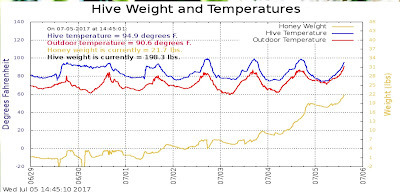 | |
| Honey at the MN State Fair. The black Buckwheat honey is Amber honey. The Reddish Honey is Light Amber, all the other honey in this picture is White Honey. |
Bee and Honey entries has to be bought to the fair on Saturday the 19th or Sunday the 20th of August.
Food exhibits only on Tuesday, August 22nd 9 am to noon.
You do get all your entries back at the end of the fair.
Entries are in three classes, novice class, open class and Junior Division aged 10 - 15 years old ( the Junior Division does have some age requirements on some entries).
The novice class is for beginners and is a great place to start if you have never entered before.
All classes need to be looked at in the premium book. Read it thoroughly because the rules need to be followed exactly.
You can enter any or all of the possible entries.
Each entry has a description of what the entry contains.
There are many entry possibilities:
Liquid Honey in glass jars
Liquid Honey in squeeze containers
Granulated Honey
Chunk Honey
Comb Honey
Extracting Frame
Gift Basket
Beeswax Block
Candles
Food Entries
Photographs
Creative Bee Art
Link to the Bee and Honey Premium Book
http://www.mnstatefair.org/pdf/competition/17-ahb-honeybee-pb.pdf










